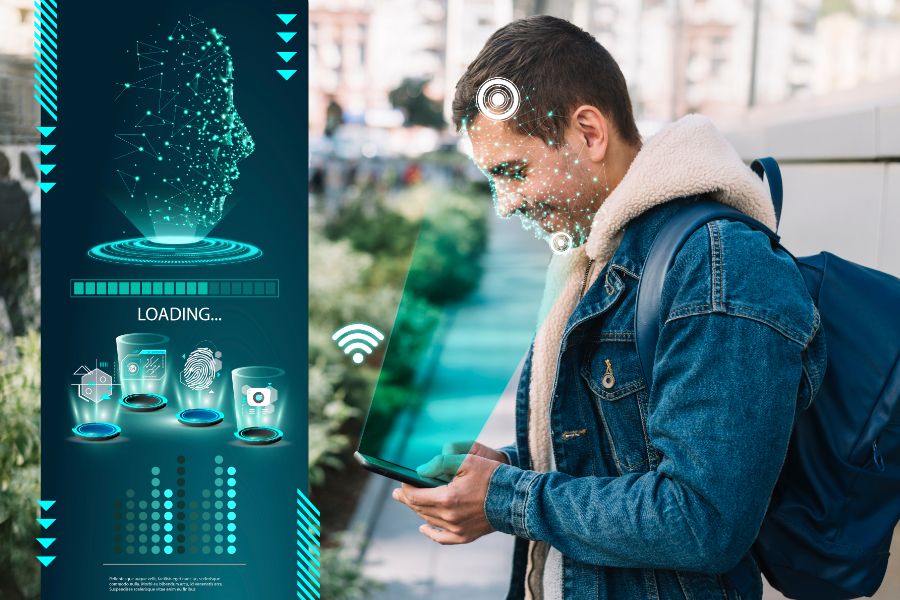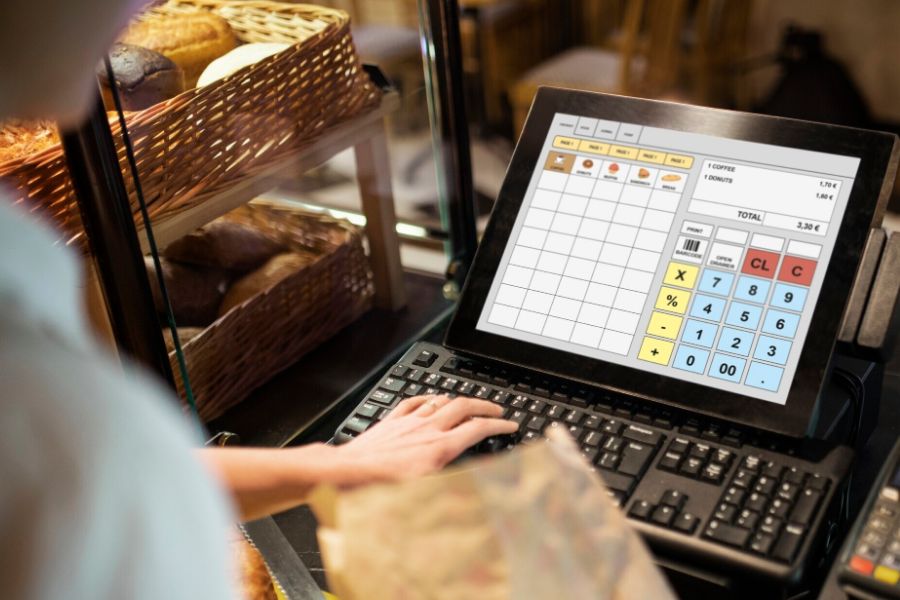In the ever-evolving landscape of point-of-sale (POS) systems, the integration of advanced technologies has become a game-changer. One such groundbreaking technology making waves in the US market is the facial recognition system. This article explores the intricacies of facial recognition systems, their operational principles, and how they are reshaping retail and various other industries in the United States.
What are facial recognition systems and how do they work?
Facial recognition system are sophisticated technological solutions designed to identify and verify individuals based on their unique facial features. Leveraging advanced technology and algorithms, these systems analyze and interpret facial characteristics to create a digital profile, allowing for accurate identification and authentication.
The process involves several key steps:
- Face detection: The system begins by detecting and locating faces within an image or video frame. This initial step is crucial for isolating the facial region from the overall scene.
- Face alignment: Once faces are detected, the system aligns the facial features to a standardized position. This ensures a consistent and uniform representation of facial elements for accurate analysis.
- Feature extraction: The system then extracts distinctive features from the aligned face. These features may include the distance between the eyes, nose shape, the curvature of the jawline, and other unique facial contours.
- Creation of facial signature: The extracted features are used to create a unique digital representation or “facial signature” for the individual. This signature serves as a digital identifier for subsequent comparisons.
- Matching: During the identification process, the system compares the obtained facial signature with pre-existing data stored in its database. In verification scenarios, the facial signature is matched against the stored data to confirm the individual’s identity.
- Decision making: Based on the comparison results, the system decides the identity of the individual. If there is a match, the person is identified; otherwise, the system may prompt further verification steps.
Facial recognition technology has various applications, ranging from security and surveillance to user authentication in electronic devices. While it offers convenience and enhanced security in many scenarios, the widespread use of facial recognition also raises privacy concerns. The technology’s ability to capture and process facial data has prompted discussions about the ethical implications and the need for robust regulations to safeguard individuals’ privacy.
Top 4 technology vendors provide AI facial recognition in the US
As the demand for an advanced facial recognition system grows, several technology vendors have emerged as key players in the United States. Let’s delve into the top 4 vendors, exploring their definitions, features, and the pros and cons of their offerings.
Amazon
Amazon is a widely recognized global supplier of facial recognition services. Their software encompasses facial search and analysis features, facilitating facial detection, user verification, and applications in public security. The software benefits from a vast database, enhancing its precision in object recognition.
The Amazon software offers image and video hosting providers seamless integration of content moderation capabilities into their applications and websites. Content moderation is instrumental in identifying and flagging inappropriate or unsafe images and videos. Moreover, the software exhibits the ability to label a diverse array of objects, detect custom logos, recognize celebrities, and analyze text content.
Features:
- Provides moderation services for images and videos utilizing detection and analytics.
- Face liveness detection
- Support for face comparison and search, thorough face detection and analysis
- Content moderation to recognize inappropriate content for further review and moderation.
Pros:
- Offers a complimentary 12-month usage period.
- Allows for easy scalability based on the user’s product requirements.
- Businesses can seamlessly connect via an API (Application Programming Interface).
- Transparent pricing categories facilitate a clear understanding.
Cons:
- Pricing may pose complexities for those seeking a quick purchase decision.
Paravision
Paravision is the next cloud-based AI recognition solution, boasting numerous high-quality attributes. Originating to address challenges in activity recognition and facial recognition, Paravision relies on real-time streaming and frame-based methods to deliver effective face detection solutions. The software excels at effortlessly detecting and verifying faces, accurately mapping their locations in live sessions. Additional features encompass face clustering, face comparison, spoof detection, phenotype detection, and age estimation.
Paravision finds practical applications in various use cases, including access control systems, Know-Your-Customer (KYC) verification, and border security control. The company offers the opportunity for potential users to experience a demo, showcasing the capabilities of their innovative solution.
Features:
- Provides docker-based face recognition engines, ensuring rapid deployment and scalability.
- Incorporates liveness and deep fake checks for enhanced security measures.
- Offers advanced object attribute analysis and features Paravision search for AI-based image search capabilities.
Pros:
- Optimized for seamless use across major platforms, including Windows, macOS, Android, and Linux.
- Offers a demo for potential users to experience its functionalities.
- Compatible for use on both desktops and mobile devices.
- Supports flexible deployment options, whether on the cloud or on-premise.
Cons:
- Pricing details for potential users are not provided, which may pose a limitation for those seeking cost-related information.
Cognitec
Cognitec introduces a live video scan feature that empowers your system to identify faces in real-time video streams. Going a step further, it assigns numerical values to facial detections and records demographic information. This solution is also available in an enterprise version tailored for large businesses.
Additionally, Cognitec offers an ID biometric verification solution designed for businesses and law enforcement agencies. Its applications span across physical security, law enforcement, and ID management.
Features:
- Cognitec prioritizes biometric data protection through cryptographic signing and template encryption.
- Boasts a substantial image database for swift face-matching results.
- Automatic real-time notifications for the detection of banned individuals entering the premises.
- Seamless integration with industry-leading HD video cameras.
Pros:
- Provides real-time watchlist alerts for enhanced security.
- Offers comprehensive statistics and analytics on people flow, demographics, and behavior.
- Supports duplicate face detection for increased accuracy.
Cons:
- Pricing information is not available on the website.
- Lacks a live customer support system for immediate assistance.
Staqu
Staqu is also a pioneer in AI and computer vision, offering cutting-edge facial recognition solutions. Their technology incorporates deep learning algorithms, cross-platform compatibility, and advanced analytics.
Here is some information about the Staqu vendors that provide AI facial recognition, let’s explore!
Features:
- Continuous improvement of accuracy through deep learning algorithms.
- Cross-platform compatibility.
- Advanced analytics derived from facial recognition data.
Pros:
- Cutting-edge technology.
- Cross-platform compatibility.
- Advanced analytics.
Cons:
- Some businesses may encounter integration complexities.
ConnectPOS stands as a leading POS system that integrates with any AI facial recognition vendors as required because it is built on an API-driven and cloud-native architecture. This system excels in real-time face detection and verification, providing businesses with a robust tool to enhance transaction security.
ConnectPOS and AI work in tandem to optimize customer experiences and operational efficiencies. AI-driven facial recognition enhances security, streamlines transactions, and contributes to data-driven decision-making, making ConnectPOS a comprehensive solution for businesses seeking advanced technology integration.
Features:
- Real-time identification of customers.
- Customer insights through data analysis.
- Fraud prevention through facial verification.
- Seamless integration with existing POS systems.
Which industries are advanced in applying facial recognition systems in the US
Facial recognition systems have found applications across various industries in the United States, transforming the way businesses operate.
Retail
The retail industry has embraced facial recognition technology to elevate customer service and optimize store management. ConnectPOS, in particular, utilizes AI-powered facial recognition to offer innovative solutions. This includes personalized customer engagement, efficient point-of-sale integration, and enhanced fraud prevention. The technology enables retailers to identify and understand customer behavior, leading to improved service and more targeted marketing strategies.
Facial recognition in retail goes beyond security applications, playing a pivotal role in creating a seamless and personalized shopping experience.
Healthcare
Facial recognition systems in healthcare have been adopted for patient identification, access control, and security enhancement. The technology helps streamline patient check-ins, reduce administrative errors, and enhance overall hospital security.
In healthcare settings, facial recognition contributes to efficient identity verification, ensuring that patient records are accurately matched and accessed by authorized personnel.
Banking and Finance
The banking and finance industry leverages facial recognition for secure authentication and fraud prevention. Biometric facial recognition adds an extra layer of security to online transactions, mobile banking, and access to sensitive financial information.
The technology ensures that only authorized individuals can access accounts, making it a valuable tool for safeguarding financial assets and protecting against identity theft.
Education
In the education sector, facial recognition systems are applied for various purposes, including campus security, attendance tracking, and access control.
Schools and universities use facial recognition to enhance the safety of students and staff, monitor attendance in a non-intrusive manner, and secure restricted areas within educational institutions. The technology contributes to creating a secure and efficient learning environment.
Conclusion
The integration of advanced facial recognition system into POS systems marks a significant stride in technology’s relentless march forward. With technology vendors like Amazon, Paravision, Cognitec, and Staqu leading the way and industries such as retail, healthcare, banking, and education embracing this transformative technology, the future of POS systems looks promising. The seamless integration of facial recognition not only enhances security measures but also contributes to a more personalized and efficient customer experience.
To change the game for your business and become successful, contact us for 24/7 support and advice about facial recognition technology.
►►► See our products: Magento POS, BigCommerce POS, Shopify POS, Woocommerce POS, NetSuite POS, Commercetools POS, Custom POS, White label POS, Customer Experience Solution and Next-Gen POS




